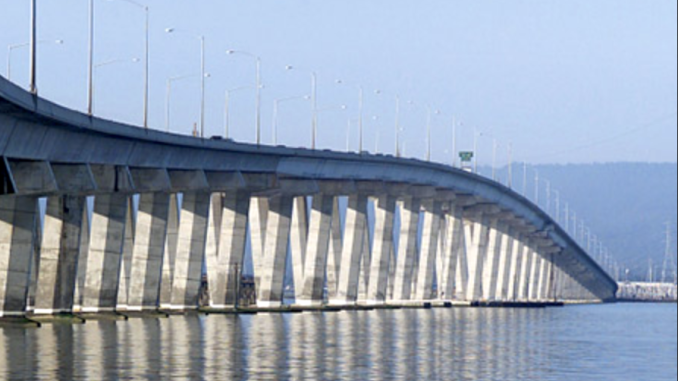
BY ELAINE GOODMAN
Daily Post Correspondent
About $315 million in tolls collected on Bay Area bridges is tied up in litigation, and it’s unclear whether the money will ever be available for transportation projects in the region.
The toll money is being held in escrow until the California Supreme Court issues a decision in a case that challenges Regional Measure 3, a series of three $1 toll increases that voters approved in June 2018. The first toll increase took effect in January 2019.
And despite the uncertainty surrounding the measure, the Bay Area Toll Authority is moving ahead with the second $1 toll increase on Jan. 1.
The regular toll for two-axle cars and trucks, as well as motorcycles, will increase to $7, up from the current $6 toll. The toll is collected on the Dumbarton, San Mateo-Hayward, San Francisco-Oakland Bay, Antioch, Benicia-Martinez, Carquinez and Richmond-San Rafael bridges.
The third toll increase is slated for January 2025.
The month after voters passed RM3, the Howard Jarvis Taxpayers Association sued the Bay Area Toll Authority, or BATA, in San Francisco County Superior Court over the measure. The taxpayers group argued that because most of the money from the toll increase would be used to pay for transportation projects not related to the bridges, the toll increase is a tax that needs two-thirds voter approval. RM3 passed with 55% voter approval.
The state Legislature was also named in the lawsuit. In 2017, the Legislature passed Senate Bill 595, which directed Bay Area counties to put a measure on the ballot to increase bridge tolls by up to $3.
The taxpayer group alleged that because SB595 resulted in a tax increase for motorists using the bridges, the bill needed a two-thirds vote from both houses of the Legislature. SB595 passed by margins of 67% in the Senate and 54% in the Assembly.
The Superior Court sided with BATA and the Legislature. The defendants had argued that the bridge tolls could be considered a charge to enter or use state property, which is not considered a tax under state law. And BATA said it was just following orders from the Legislature in raising the toll.
The Howard Jarvis Taxpayers Association appealed, but the California Court of Appeal upheld the Superior Court’s decision. Now the taxpayer group has taken the case to the California Supreme Court.
The case is on hold while the court considers another case, Zolly v. City of Oakland, which raises similar legal questions. Oral arguments are the next step in the case.
Refunds are possible
If the taxpayer group prevails in the lawsuit, the Bay Area Toll Authority would attempt to issue refunds of toll amounts collected as a result of RM3. About three-quarters of the bridge tolls are paid using FasTrak, and those would be “straightforward” to refund, according to John Goodwin, a spokesman for the Metropolitan Transportation Commission. The MTC board oversees the Bay Area Toll Authority.
It would also be simple to refund toll money to drivers who were invoiced through an electronic system that replaced cash toll collection as a result of Covid-19, Goodwin said. But refunding the RM3 toll money to drivers who paid with cash before the invoicing system started “would prove far more challenging,” he noted.
As of Nov. 30, $315 million had been collected from the RM3 toll increase.
Fiscal uncertainty
The RM3 litigation was mentioned earlier this month as a contributor to the fiscal uncertainty that Bay Area transit agencies are facing. The comments came during an MTC “listening session” regarding a potential transportation ballot measure in the future.
“We’re all hopeful that those funds will be freed up, but if they’re not, we need to make sure that we’re thinking about how to replace the benefits that those funds were going to provide,” Seamus Murphy, executive director of the San Francisco Bay Area Water Emergency Transportation Authority, said regarding the RM3 toll money. WETA runs the San Francisco Bay ferry service.
But Goodwin with MTC described the discussion of a potential future tax measure as “wholly separate from the uncertainty about when the RM3 litigation might conclude.”
‘Mega measure’
He said the discussions are a return to a “mega measure” concept that the Bay Area business community had been pursuing before the idea was dropped in light of the Covid-19 pandemic. Many details of a potential measure are yet to be worked out, Goodwin said, including its timing, what funding sources might be proposed, and whether the money would go to housing, transportation or a combination of both.
Money raised through the RM3 toll increase is intended to fund an array of projects, including upgrades to the Dumbarton Bridge corridor, extension of the Caltrain corridor to the Salesforce Transit Center in downtown San Francisco, expansion of San Francisco Bay Ferry service, the purchase of more new BART cars, and extension of the BART system from Berryessa to downtown San Jose and Santa Clara.
At least two projects have been delayed due to the RM3 funds being held in escrow, Goodwin said. Those are the Mission Bay Ferry Landing project in San Francisco and an extension of the SMART rail corridor from the Sonoma County Airport station to Windsor.
